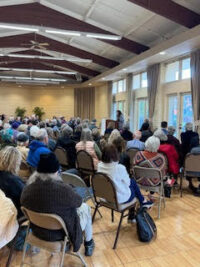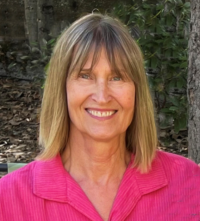The Sun is pleased to bring you two views on Measure E, the lone item on our November 6, 2007, ballots. This is a parcel tax measure that, if approved by two-thirds of those voting, would assess each parcel in the school district $91 per year for six years.
The full text of Measure E runs about 1,200 words and identifies seven purposes: (a) restore cuts made in the District budget including, but not limited to, reductions in personnel; (b) library services; (c) vocational and career programs; (d) technology support; (e) college preparatory programs; (f) basic academic programs; and (g) recruiting and retention of highly qualified teachers.”
Other provisions of Measure E include segregation of funds, a Citizens’ Oversight Committee, and an annual audit made public. No funds can be used for adminstrator salaries. Senior citizens may be exempted from tax on their principal residence. There was no ballot statement filed in opposition to Measure E.
The opinions below were penned in response to the following thesis statement: “Measure E will improve our public schools.”
Schools Need Will To Succeed, Not More Money
Lewis Perdue
Measure E should be defeated because it will make no difference. The system hasn’t used existing funds wisely so it’s irresponsible to give them more.
I say this as both a Sonoma Valley parent and as an educator. I have served on the faculties at UCLA and Cornell University and come from a family filled with educators that range from a public high school history teacher to a public university president. I have great respect for teachers at every level, but our system that broken and needs the will to succeed rather than more money.
First: we withdrew our son from Sonoma Valley High School this year after two weeks as a freshman because the quality of his instruction was appalling and the learning environment substandard.
One example clearly illustrates this. In his “honors” geometry class, our son found the teacher did not teach. Instead, each class began with the teacher offering ten or fifteen minutes handing out an assignment to be finished in class by students sitting together at tables of four. Then the teacher spent the remainder of the 90-minute session in front of a laptop and unavailable for questions and discussion.
In addition to a lack of teaching, the classroom was undisciplined and incompatible with any degree of academic excellence. The environment was noisy and many students used the time to text their friends on cellphones. Two of the three others at my son’s table were students who had failed the class the previous year and seemed destined to repeat their performance unless they could get our son to pull their weight for them.
At the beginning of the second week of school, we spoke with the school administration about this situation. We were told that the teacher was acting in accordance with the curriculum, a program which had been adopted called “CPM.” No solution was offered. In essence, the teacher was being paid not to teach. This is not a responsible use of funds.
We withdrew our son when the geometry teacher announced that there would be a group test with all members of the group getting the same grade regardless of individual mastery. This is academically unsound and individually unfair. Other classes suffered from similar academic failures including an “honors” English class where the summer reading of “Great Expectations” was summarily dismissed with cursory discussion. In addition, two weeks of this class passed without students needing to do any critical or analytical writing. This is not honors level and this is not academically sound.
If problems had existed with a single course, or if the administration had made any effort to correct the shortcomings, we would not have withdrawn our son. But our experience revealed fundamental and systemic academic failings that more money cannot solve. I would vote for Measure E in a heartbeat if there was any indication it would. My experience indicates it will not, so I will vote “no.”
Vote Yes on Measure E
Laura Zimmerman
Here’s a unique math problem for you. It is a word problem, not likely to be on the SAT test:
“How can you change the daily lives of roughly 4,800 young people for the next 6 years by spending just 25 cents per day? ”
That equation is the opportunity before the community of Sonoma. The answer is remarkably simple. Vote Yes on Measure E. The Measure E parcel tax of $91 (25 cents a day) will bring local public schools a stable, reliable, local funding stream, unencumbered by Sacramento politics. Measure E allows a senior exemption, and pays not one penny to administrative costs. Measure E will pay for high school and middle school sports, district-wide libraries, high school leadership classes, vocational training and more.
School finance is a tangled web. Every state in the union has a different system. In California, every school district has a different funding formula worked out by the state. We can’t fix all that. But we most certainly can ease the strain caused by years of inadequate, bare bones state funding. We can make daily life in our own local public school that much better.
When I was a child, attending California public schools in the 1960s and ‘70s, no one ever asked my mom and dad to donate money, or to volunteer in a classroom. In fact, if my mom had shown up at school in the middle of the day, I would have imagined I was in some kind of big trouble. Since the time my own three children entered school in the East Bay and then later here in Sonoma, my husband and I have been asked to give time and money in various ways each year – for a playground, a computer lab, for restoring athletics, and even buying basic school supplies like paper. By the way, when our daughter attended two years of parochial school, we were asked to donate there, as well. We understand now that helping out is not due to waste or error. It is the way schools cover the gap between what the state provides and what it really takes to give a child an excellent education, not a bare bones one.
Sonoma is home to a historic High School, one of the oldest in Northern California, and also one of the newest Middle Schools, which offers an innovative multi age program. We have five elementary schools and two Charter Schools, including one that offers Waldorf methods. Public schools offer a seat to everyone, and are the one sure thing that helps kids stay safe in uncertain times. The job of educating and preparing every child for a successful future is a mighty one. Luckily for us, our teachers and administrators are doing a fine job with limited resources. Measure E will make that job a bit easier and will make life a bit better for the students of our schools. Please Vote Yes on Measure E. Vote Yes for better schools and a brighter future.
There is presently on our local property tax bills an ad valorem charge at 5¢ per $100 of assessed value. That is, $150 per year for a typical home assessed at $300,000. This pays off bonds sold in 1997 for “Safe, Warm, and Dry” capital improvements at most of the public school campuses. The charges for that bond are expected to drop until the bond is completely paid off in 2025.
Sonoma Valley Unified, with an enrollment of 4,914 students (all figures based on 2005-2006 statistics from California Department of Education), ranks #158 in size out of 329 unified school districts in California. Unified districts include both elementary and high schools. Compared with others of similar size, here are selected summary figures:
State Teacher Students
County District Enrollment Funding Salary per Teacher
Kern Tehachapi 4,879 $5,283 $58,671 24.0
Riverside Banning 4,906 $5,062 $57,918 19.9
Alameda Dublin 4,912 $6,102 $67,297 20.0
Sonoma Sonoma Valley 4,914 $5,795 $56,293 20.6
Monterey North Monterey 4,919 $5,483 $58,410 21.7
Stanislaus Patterson Joint 5,087 $5,214 $54,282 20.6
Solano Benicia 5,130 $5,220 $57,408 21.1
And here is Sonoma Valley compared with other unified districts nearby:
Sonoma Cloverdale 1,582 $5,670 $55,605 19.7
Sonoma Healdsburg 2,485 $5,604 unreported 21.8
Sonoma Windsor 4,905 $5,269 $57,053 20.7
Sonoma Sonoma Valley 4,914 $5,795 $56,293 20.6
Sonoma Cotati-Rohnert Park 7,023 $5,515 $57,808 21.8
Marin Novato 7,925 $5,145 $53,951 20.3
Napa Napa Valley 17,408 $5,823 $57,629 19.9






